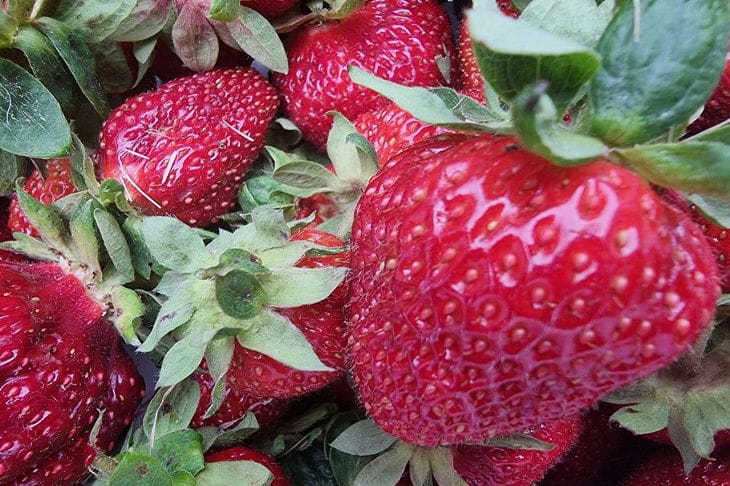Strawberry is a favorite berry bush of gardeners. Its tasty and aromatic fruits decorate our tables in summer and delight the eye with their beauty.
However, to get a rich harvest, it is necessary to take proper care of the plant.
There are many methods for growing strawberries, from traditional to more experimental.
But regardless of the method chosen, there are several general rules that should be taken into account when working with this shrub.
Based on the experience of professional gardeners, we have prepared for you a list of useful recommendations for growing strawberries, thanks to which your harvest will be better and bear fruit longer.

The Importance of Choosing the Right Place to Plant Strawberries
Choosing a place to plant strawberries is one of the most important steps towards successfully growing this berry bush.
Experienced gardeners recommend choosing open, sunny places for strawberries, protected from the wind.
Shading can slow down plant growth and development and reduce the quantity and quality of the crop.
Despite the fact that strawberries love humidity, you should not choose places with high groundwater levels or located close to melt water.
If overwatered, the root system may rot, which will negatively affect the health and productivity of the plant.
You should also pay attention to the soil. Strawberries prefer light, fertile soil with a pH of 6-7. To ensure good soil quality, you can analyze it and add the necessary nutrients or organic material.
You should also avoid planting strawberries in the same areas where they were grown previously. This can lead to soil contamination with fungal diseases and parasites.
By following these tips, you can provide your strawberries with optimal conditions for growth and development, which will increase their productivity and yield for many years.
Basic principles of strawberry care throughout the season
In order for strawberries to please you with their fruits throughout the season, you need to monitor them and pay them enough attention. The basic principles of strawberry care include regular watering, fertilizing, weeding and pruning.
Regular watering is one of the most important aspects of growing strawberries. During the ripening period, it is necessary to water it every 2-3 days, and in hot weather – daily. After each watering, the soil should be loosened.
Strawberry fertilization is carried out twice a year: the first time - after flowering, the second time - 4-6 weeks after the first fertilization. It is recommended to use organic fertilizers.
Weeding is a very important process for plant health. It is necessary to remove all weeds and possible diseased leaves.
Strawberry pruning helps to form the bush and promotes more intensive fruiting. It is necessary to remove all withered and dried leaves.
Following these principles will allow you to get a rich strawberry harvest and extend the fruiting season.
Secrets of proper feeding and watering of strawberries
One of the main secrets of successful strawberry growing is the right approach to feeding and watering. First of all, it is worth knowing that strawberries love moisture, but do not tolerate stagnation. Therefore, watering should be done regularly and moderately, providing the soil with sufficient moisture without creating puddles.
As for feeding, it is necessary to use complex fertilizers containing all the necessary microelements for plant development. It is best to use organic fertilizers - compost or humus. They should be added to the soil before planting seedlings or after picking berries.
If strawberries are grown on sandy soil, they need additional nitrogen fertilization for more intensive growth and development of the root system. In this case, nitrogen fertilizers can be used.
It is also worth remembering that frequent removal of faded flowers helps to continue fruiting for a longer period of time. It will also be useful for you to carry out preventive treatments against pests and diseases in order to prevent deterioration of the quality of berries and reduction of the fruiting period.
Pest and Disease Control of Strawberries: Effective Methods of Protection
Strawberry is a plant that often falls victim to pests and diseases. In order to get a good harvest and extend the fruiting period, it is necessary to take measures to protect the plants.
One of the most common strawberry pests is the spider mite. As a rule, it appears on the leaves and fruits of the plant. To combat this pest, you can use special insecticides or treat the plants with tobacco infusion.
Another common problem is strawberry root rot. This disease causes the death of the root system and can seriously affect the yield of plants. To prevent its occurrence, it is necessary to follow the correct watering regime and treat the soil with antiseptics.
It is also worth paying attention to fusarium wilt of strawberries - a fungal disease that affects the roots and stems of plants. In this case, special fungicides will help, as well as planting strawberries on land where plants from the strawberry family have not previously been grown.
It is important to remember that the use of chemicals should be limited and carried out only when absolutely necessary.
How to Harvest and Store Strawberries to Maintain Quality and Freshness
Strawberries are very delicate and perishable berries, so they need to be picked correctly and stored in appropriate conditions. First, it is recommended to pick strawberries in the morning or evening, when they are cool. You need to carefully cut the berry from the stem and do not crush it with your fingers. Also, do not bend the stems so as not to damage the plant.
After picking, the strawberries need to be thoroughly washed and dried on a paper towel. Then you can spread the berries on a flat surface and put them in the refrigerator, after placing them in a container or bag. The optimal temperature for storing strawberries is 0-2 degrees Celsius.
It is important to remember that strawberries are very sensitive to the smells of other products, so they should be stored separately from other products. It is also advisable to use special containers with holes for air circulation.
It should be noted that storing strawberries for more than 2-3 days can lead to a deterioration in their taste and nutritional qualities. Therefore, it is better to collect berries as needed and eat them as soon as possible after picking.
Earlier we talked about June feeding for onions, thanks to which the harvest will be twice as large.








